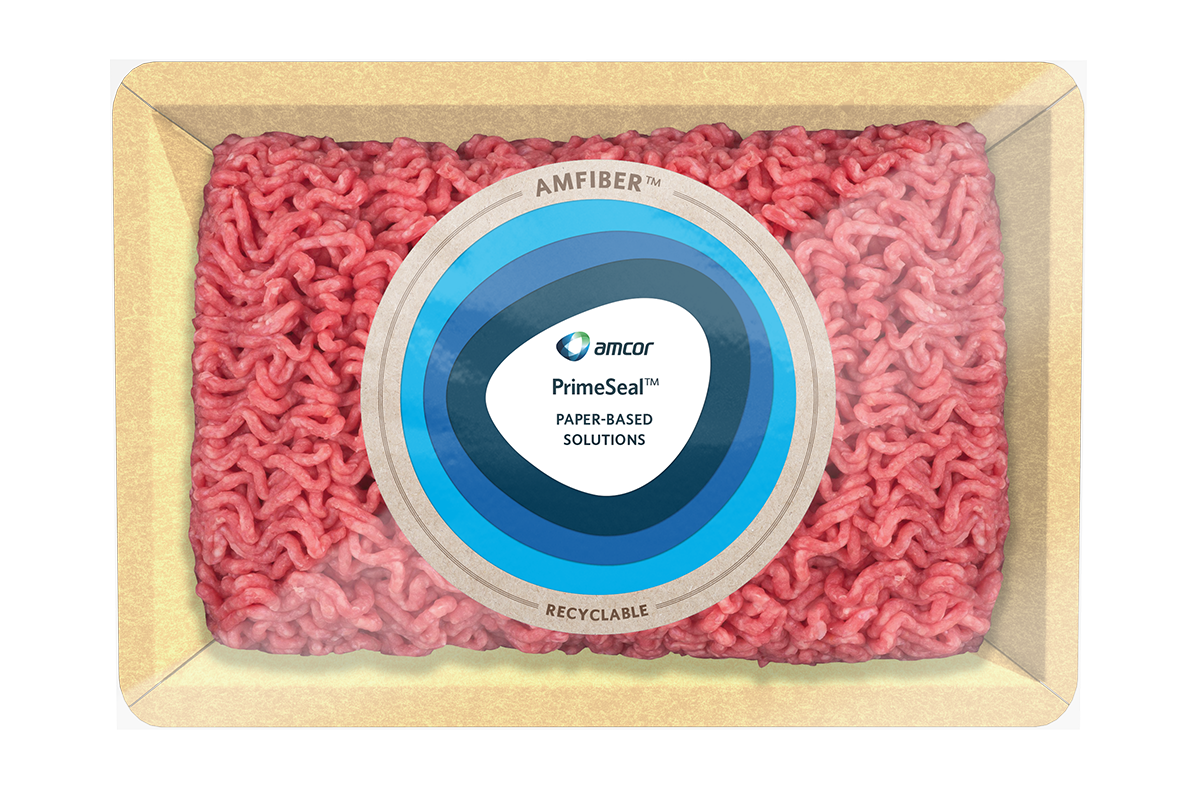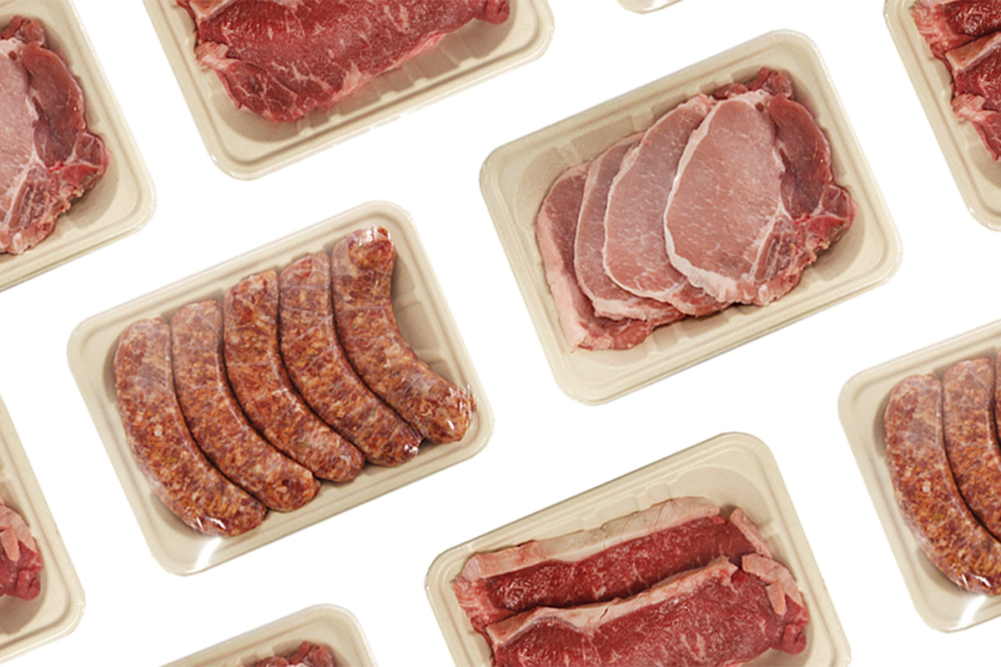The world of consumer packaged goods is evolving rapidly, with stakeholders across the value chain demanding reductions in packaging waste and climate impact.
Shoppers are choosing sustainability with the items they put in their carts, brands are committed to their pledges, and investors are watching and expecting action. With flexible film recycling still developing across the globe, producers are adopting essential key performance indicators in addition to recyclability and beginning to measure carbon footprint and waste.
“For protein packaging, product protection and shelf-life extension are the most critical functions of packaging to reduce food waste, and yet they tend to often be invisible to consumers,” said Melanie Bandari, senior marketing manager, Meat, Poultry & Seafood for Amcor Flexibles North America, Oshkosh, Wis. “The industry is realizing that you don’t have to compromise to have more sustainable packaging. As consumers around the world grow more concerned about food waste, producers will embrace more responsible packaging solutions.”
Alex Hayden, senior vice president of research and development for TC Transcontinental Packaging, Chicago, understands that customers need the company to provide safe, high-performing and reliable packaging that preserves and protects their meat and protein products.
“To that end, we are focused on creating durable, high-barrier films that will extend shelf life, keep food safe, run efficiently on processing lines and minimize packaging and product waste,” he said. “Strong and protective flexible packaging reduces food waste which contributes to a healthier environment in terms of reducing methane gas.”
Mike Rogers, tray overwrap product line manager with Ossid, Battleboro, NC, noted equipment suppliers are working toward improved packaging efficiencies with decreased downtime, as well as energy and material cost savings.
“Packaging machinery is expected to keep up with retailers’ green initiatives by offering equipment capable of handling a multitude of packaging formats and materials,” he said. “The shift away from foam trays has been the biggest game changer in the meat and poultry industry. Rolled edge plastic trays have been a popular alternative offering 100% recyclability, a number of tray color options including clear and a much-appreciated increase in tray strength.”
Additionally, these trays better contain and protect the packaged product in comparison to foam trays.
The demand for sustainable packaging solutions has also prompted existing and new tray suppliers to develop compostable tray options.
In addition to recyclable trays, an application type growing in popularity in the US market for meat, poultry, and other foods is Vacuum Skin Packaging (VSP) on board, as it uses 70-80% less plastic than a standard #3 tray and offers an extended shelf life for the packaged product.
Making a Difference
Nearly 40% of all food in America is wasted, which equates to 118 billion lbs or $408 billion in food thrown away each year, according to the latest data from Feeding America, a non-profit working to end hunger in America. Product protection and shelf-life extension are the most critical functions of packaging to reduce this food waste.
Amcor officials said the company is investing more than $100 million in research and development every year and is innovating to produce more sustainable packaging and use more recycled content than ever before.
“We were the first global packaging company to pledge to design all our products to be recyclable, compostable or reusable by 2025 and to significantly increase our use of recycled content,” Bandari said. “We are one of a handful of packaging companies committed to using science-based targets and achieving net zero emissions.”
Amcor is also working closely with its fresh and processed protein processors to help them achieve sustainability objectives.
“Our sustainable lineup of protein packaging solutions seeks to enable brands and consumers to participate in waste management systems and helps to reduce food waste by selecting the right packaging,” Bandari said. “Amcor’s AmPrima recycle-ready forming and lidding films and pouches provide high-barrier solutions that meet shelf-life requirements with a recycle-ready package in a wide variety of formats with convenient reclose features.”
Ossid’s Leak Resistant 500E Tray Over-wrapper is an industry leader in developing overwrapping machinery and leak-proof packaging equipment with over 1,000 installations worldwide.
“The NextGen500E can easily package a wide range of tray types and sizes and uses 5-10% less film than non-gripper chain systems,” Rogers said. “Ossid has partnered with Italian OEM food packaging industry leader, Reepack, as the master North American distributor, providing all sales, service, and support. By adding Reepack’s high quality tray sealing, thermoforming, vacuum chamber, and flow wrapping equipment to Ossid’s existing offerings, we’re able to offer the best protein packaging solution for each customer’s unique needs.”
In terms of new technology in the space, TC Transcontinental Packaging has been working to develop flexible packaging for meat and protein that is lighter and reduces the amount of material used and reduces transportation weight and impact.
“Our Clearshield product that is tubestock for bone-in meats is designed to reduce the amount of plastic used while providing a high degree of product protection,” Hayden said. “We are also spending a great deal of focus on developing structures that contain a percentage of PCR (post-consumer recycled) content to improve the environmental footprint of the packaging. We are also in development with recycle ready films for this category.”
Additionally, the company feels it’s important to support the market by providing recommendations to “right-size” and “right-spec” packaging based on each individual customer’s products and processes.
“Our Customer Technical Support (CTS) group is a dedicated group of technicians who have a depth of expertise in this area and support our customers on-site,” Hayden said. “The CTS Team will recommend the most suitable size and specification for the product to minimize packaging waste and use and maximize performance. This ensures our customer’s operational costs drive back into their bottom line, and not the scrap bin.”
 Source: Amcor Flexibles North America
Source: Amcor Flexibles North America
The Road Ahead
Today’s consumers, especially the millennial generation, are increasingly more concerned with limiting their negative impact on the environment.
“Food packaging is a necessary evil,” Rogers said. “Consumers are asking and seeking alternatives for what more can be done to safely protect and preserve their grocery items, while feeling good about the reduced plastic and foam usage.”
With that in mind, he believes the future will see an increased focus and innovation around new package materials and styles utilizing more natural elements, such as corn-based resin film, and a transition to more compost or recycle-friendly components.
A vibrant planet with a healthy population relies on food being transported without spoiling and being transported in a clean and safe way. Responsible packaging is therefore critical to meet society’s need for packaging while reducing the impact on the earth and keeping waste out of the environment, and in doing so preserving the planet for the future.
“Amcor’s responsible packaging strategy identifies a clear path to meeting our sustainability ambitions and those of our customers: product innovation, consumer participation and infrastructure development,” Bandari said.
Hayden believes the future looks bright for this category and for packaging as more and more strive to meet those 2025 goals of acknowledging the important role flexible packaging plays in reducing food waste, while uncovering a sustainable solution whereby plastic never becomes waste.
“We are already aggressively working on tomorrow’s sustainability solutions with an intensified focus,” he said. “Keeping up with the changing consumer innovation must come from many facets: R&D, our team, supply chain partnerships, and inspired collaboration with our customers will get us there.”



